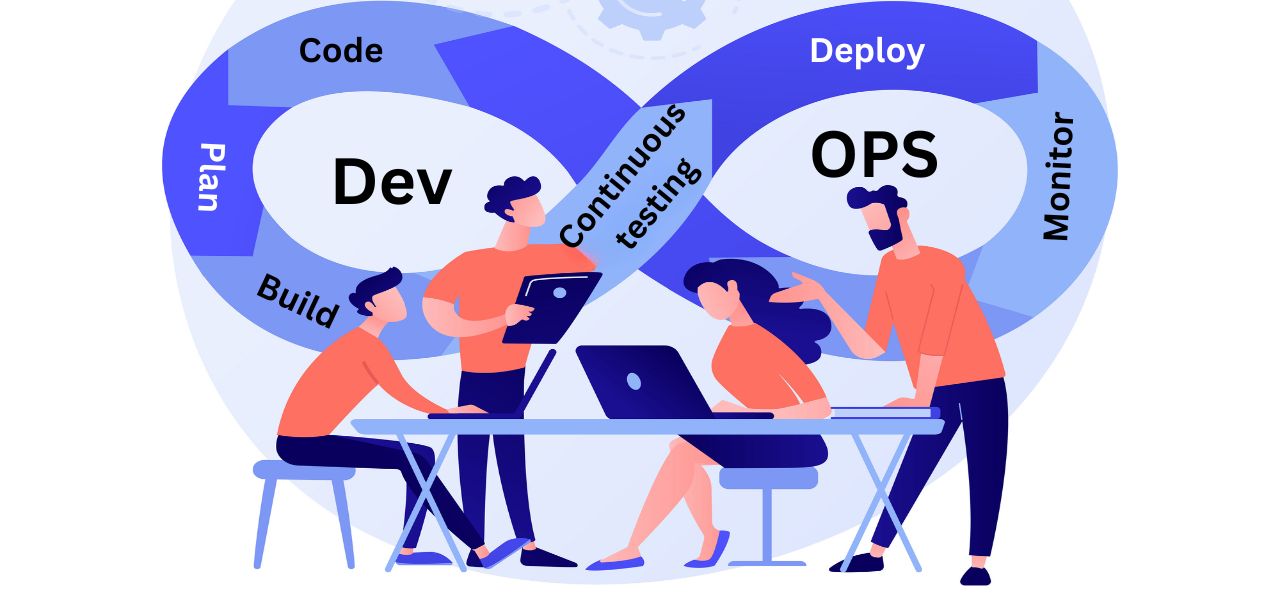As we navigate the ever-evolving landscape of software development, it’s clear that DevOps has emerged as a game-changer. With over 60% of companies embracing DevOps practices by 2025, this approach has revolutionized the integration of software development (Dev) and IT operations (Ops).
But did you know that DevOps can boost deployment frequency by up to 200%? More than just a methodology, DevOps represents a cultural shift, redefining collaboration, automation, and delivery in software teams.
In this article, we’ll explore the core of DevOps, shedding light on its principles, practices, and significant impact on the tech industry. What makes DevOps a critical element in the current software development paradigm, and why is it indispensable in our tech-driven era?
2. 4 Core Principles of DevOps
3. DevOps Practices and Methodologies
4. Tools and Technologies Powering DevOps
5. The Impact of DevOps on Software Development and IT Operations
6. Overcoming Challenges in DevOps Adoption
7. Expanding the Scope of DevOps: Beyond Traditional Boundaries
1. The Evolution of DevOps
Origin in Agile Movement:
DevOps has its roots in the Agile movement, which transformed software development with a focus on flexibility, collaboration, and rapid delivery.
Agile methodologies have been adopted by 86% of software development teams, emphasizing the need for adaptive and collaborative approaches.
Evolution from Agile to DevOps:
As Agile methodologies evolved, a significant gap between development (Dev) and operations (Ops) teams became apparent, hindering true agility in the software development process.
Research indicates that projects can see a 30% improvement in efficiency when development and operations teams collaborate effectively.
DevOps as a Harmonizing Solution:
DevOps emerged to bridge the gap between Dev and Ops, aiming to integrate these traditionally separate functions.
It promotes a unified approach, encouraging developers and operations teams to collaborate throughout the software lifecycle, from initial design to development, and through to production support.
Companies that implement DevOps practices report up to a 60% reduction in time-to-market for new software and features.
2. 4 Core Principles of DevOps

Continuous Integration and Continuous Delivery (CI/CD):
CI/CD stands as the cornerstone of DevOps, emphasizing frequent and automated integration and deployment of code changes.
This approach ensures a consistent and smooth flow of updates to production environments, minimizing disruptions.
Automation:
Automation is a key principle in DevOps, focusing on automating repetitive and routine tasks.
The goal is to increase efficiency and accuracy while reducing the likelihood of human error.
Collaboration and Communication:
Central to DevOps is the emphasis on collaboration and open communication among teams.
This principle fosters a culture of shared knowledge and skills, enhancing team dynamics and efficiency.
Holistic Approach:
DevOps adopts a holistic approach, integrating various aspects of development and operations.
This unified strategy streamlines processes, encourages, innovation, and facilitates rapid problem-solving.
3. DevOps Practices and Methodologies
| Practice/Methodology | Description |
| Automation of Delivery Process | Enables quick and reliable release of new features and updates through automated workflows. |
| Microservices Architecture | Involves developing small, independently deployable services for better scalability and flexibility. |
| Monitoring and Logging | Essential for maintaining system health and performance, and providing insights into application behavior. |
| Infrastructure as Code (IaC) | Automates the provisioning and management of infrastructure, ensuring consistency across environments. |
| Configuration Management | Tools and practices that manage and maintain infrastructure and application configurations. |
4. Tools and Technologies Powering DevOps

Docker:
A containerization platform that ensures consistent deployment across various environments.
Simplifies configuration and scaling of applications.
Jenkins:
An automation server used for Continuous Integration and Continuous Delivery (CI/CD).
Streamlines the build and deployment process of software.
Kubernetes:
A container orchestration system that manages and scales containerized applications.
Enhances the deployment and operation of applications in various environments.
Ansible:
A configuration management tool that automates software provisioning, configuration management, and application deployment.
Ensures consistency and efficiency in managing complex deployments.
Git:
A version control system that tracks and manages code changes.
Facilitates collaboration among development teams and supports code review processes.
5. The Impact of DevOps on Software Development and IT Operations
The adoption of DevOps has significantly transformed both software development and IT operations. It has led to faster deployment cycles, enabling organizations to respond swiftly to market changes and customer needs.
The quality of software has improved, with continuous testing and integration reducing bugs and issues. Operational efficiency has seen a boost, with automated processes freeing up time for teams to focus on innovation and strategic tasks.
Collaboration between developers and operations has led to a more cohesive and agile work environment, breaking down traditional barriers and fostering a culture of continuous improvement.
6. Overcoming Challenges in DevOps Adoption

While DevOps offers numerous benefits, its implementation is not without challenges.
Cultural shifts are a major hurdle, requiring changes in mindset and collaboration habits.
Skill gaps present issues, necessitating new competencies in automation and cloud technologies.
Integrating and configuring various DevOps tools can be complex.
Overcoming these challenges involves investing in training and development.
Fostering a culture of open communication and collaboration is essential.
Adopting a phased approach to tool integration and process changes is beneficial.
7. Expanding the Scope of DevOps: Beyond Traditional Boundaries
DevOps is evolving to encompass more than just development and operations. Its principles are being applied to areas like data analytics, where rapid, iterative processing of data is crucial.
Cloud computing has become an integral part of DevOps, with cloud services providing the agility and scalability that DevOps practices thrive on. Additionally, DevOps principles are increasingly influencing business strategy, driving operational efficiencies and faster decision-making across organizations.
8. Conclusion
DevOps is more than a set of practices; it’s a paradigm shift in the world of software development and IT operations. By bridging the gap between development and operations, DevOps has not only enhanced efficiency and agility but also fostered a culture of collaboration and continuous improvement.
As technology continues to evolve, so will DevOps, adapting and expanding its scope to meet the ever-changing demands of the digital world.

Comments
0